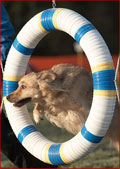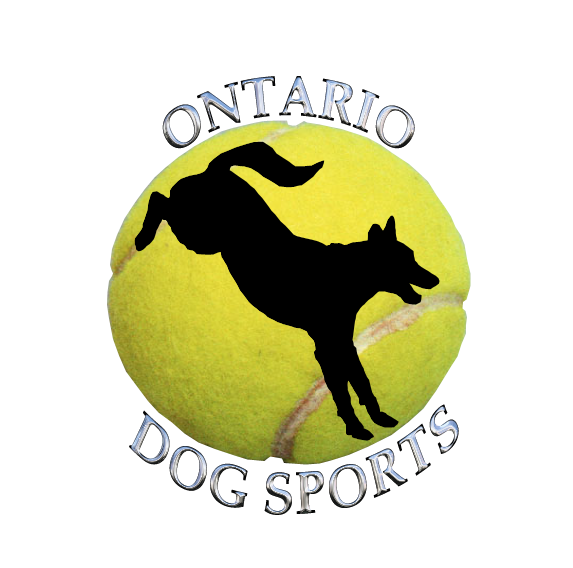Dealing with Cruciate Ligament Injuries in Labrador Retrievers
Dealing with Cruciate Ligament Injuries in Labrador Retrievers
Chances are your Labrador Retriever may have experienced a ruptured cranial cruciate ligament (CCL). It’s the most common orthopedic injury seen by veterinarians and is considered exceedingly common in Labradors.
Kurt Schulz, D.V.M., M.S., DACVS, associate professor of surgical and radiological sciences at the University of California-Davis School of Veterinary Medicine, says, “Labradors tend to be active dogs that take part in a wide-range of sports. CCL tears are very common in Labs. This may be due in part to a genetic disposition and a tendency for less active dogs to become overweight. Unfortunately, there is no known way of preventing CCL injuries, because we don’t know the underlying cause. Controlling body weight is the single most important step an owner can take to minimize the risk of this problem. Moderate activity and fitness are beneficial.”
A dog’s CCL is similar to the anterior cruciate ligament (ACL) in humans. Located in a dog’s stifle (knee joint), the CCL plays a key role in stabilizing the femur (thighbone) on the tibia (shinbone) and allowing a dog to bear weight on his or her leg. “When the CCL tears, the two bones are destabilized and the dog becomes lame,” Schulz says. “Unless the injury is treated fairly quickly with surgery, painful arthritis will likely set in.”
“Sometimes a dog can tear its CCL either partially or completely as a result of a traumatic injury like twisting or wrenching the knee,” Schulz says. “But the ligament can also slowly stretch and tear over time, resulting in a chronic, insidious injury. When that happens, a dog might limp for a while but regain use of the leg until the complete tear occurs and the dog is no longer able to put weight on the leg.”
Determining CCL Ruptures
If your dog starts to limp, you should take him to the veterinarian immediately, Schulz recommends. “Early treatment is important to stave off cartilage damage, which leads to arthritis,” he says. “Since a cruciate tear doesn’t show up on radiographs, in the vast majority of cases we don’t X-ray.”
Instead, your veterinarian will likely evaluate the way your dog is walking and palpate his legs, feeling the knee carefully for any slipping, Schulz says. “Your veterinarian will flex the knee to see whether the top of the tibia can be pulled forward abnormally, like a drawer, indicating a CCL tear. Your veterinarian may also pull the affected leg out to the side checking for instability,” he says.
A partial cruciate tear doesn’t necessarily result in instability. “If a portion of the ligament is intact, the veterinarian may not feel the instability,” Schulz says. “In that case, it is helpful for a veterinarian to view the ligament either through surgery or arthroscopy, a procedure in which a small camera is attached to a scope, for diagnosis of a cruciate problem. For a definite diagnosis, it is important for a veterinarian to either feel or see that the CCL is torn.”
During an initial examination, a veterinarian should base treatment and recovery recommendations on an individual dog, says Denis Marcellin-Little, D.E.D.V., associate professor of orthopedic surgery at North Carolina University College of Veterinary Medicine. “A dog’s fitness level, the extent of the injury, the level of pain, and the functioning of the joint all factor into the decision. Surgery is important, but what happens before and after surgery will be important as well.”
Surgical Options
Surgery to stabilize the knee is usually the treatment of choice for dogs over 20 pounds, Schulz says. There are several types of surgery, and the best choice will vary for an individual dog. Surgery may range from $1,000 to $5,000. Surgical techniques used to repair CCL tears include:
• Extra Capsular Suture: The conventional surgical treatment, this procedure involves anchoring and tying a strong surgical suture around the knee joint to restore normal position and stability of the femur on the tibia. The procedure provides support and performs a similar function as the cruciate ligament.
• Tibia Plateau Leveling Osteotomy (TPLO): This procedure levels the slope of the tibial plateau so the cruciate ligament isn’t necessary to keep the femur from sliding down the plateau of the tibia. Surgery involves cutting and rotating the top of the tibia, then screwing a bone plate into place so the bone will heal in its new position.
• Fibular Head Transposition: This technique uses the lateral collateral ligament to do the work of the cruciate ligament. The head of the fibula is rotated and the ligament is redirected to mimic the cruciate ligament and is held in place with pins and wires.
• Tibia Tuberosity Advancement (TTA): Similar to TPLO surgery, TTA stabilizes the knee joint by changing the geometry and physics of the knee and enabling it to work without a cruciate ligament. TTA surgery may be less invasive and quicker than TPLO surgery, but its long-term benefits have not been assessed.
Surgical Recovery
The good news about surgery for CCL ruptures is that it is frequently curative, meaning a dog can go back to normal use of his leg. The bad news is that the surgical recovery takes from six to 14 weeks, and a dog must be quiet and controlled during this time. Recovery depends on the body condition and age of the dog and the surgical procedure performed.
Though it may be difficult to keep an active dog quiet for six weeks or more, it is crucial, says Schulz, noting that consequences of noncompliance are serious. “Allowing a dog to be active during surgical recovery can lead to complete surgical failure, as well as infection,” he says. “And if surgery fails, a second operation may be necessary. There should be no running, jumping, falling or slipping during recovery.”
Breeder Laura Michaels of Flint, Mich., was concerned about surgical recovery when her 4-year-old Labrador, “Darby,” required a CCL repair in 2001. Michaels, who breeds under Woodhaven Labradors, participates in agility with her dogs. She thought she noticed a misstep when Darby was practicing weave poles, then later that night noticed Darby was tentatively putting weight on the leg. A visit to the veterinarian confirmed the diagnosis.
“I was frantic about the diagnosis and the thought of trying to keep her quiet so long,” she recalls. “With six other dogs in the house, I didn’t think I could do it. Darby had TPLO surgery, and the recovery was swift and complete.”
Physical Therapy
Post-surgical physical therapy and rehabilitation are key in a dog’s ability to regain full function of the knee joint, which is especially important for working Labradors. “Professional physical therapy can be extremely helpful, but there is an additional cost,” Schulz says.
“We recommend physical therapy at different intensity levels, depending on factors like a dog’s fitness level and age,” says Marcellin-Little. “It is far from being a cookbook approach. While physical therapy can be beneficial, any activity your dog performs post-surgery should be coordinated with your veterinarian.”
Future Injuries & Prevention
Unfortunately, once a dog has had a cruciate injury in one knee, it’s not unusual for him to have the same problem in the other knee. About 30 percent of dogs that have surgery in one knee will require it in the other, Schulz says.
In addition, a CCL tear can lead to injury of the meniscus, the two cartilage cushions that sit inside the knee and serve as shock absorbers when a dog walks. “If the meniscus tears, it can very painful for the dog and must be treated surgically,” Schulz says. “About 50 percent of completely torn cruciate ligaments lead to meniscal injury. When the meniscus is torn, the knee will make a characteristic popping sound when the dog is walking.”
Since there is no known way of preventing a CCL injury, veterinarians speculate on prevention. “While it is believed there may be a genetic connection in CCL tears, the exact connection isn’t known,” Schulz says. “It is likely in the future we will identify characteristics to avoid in breeding.”
In the meantime, it is thought that carrying excess weight may place a dog at increased risk for CCL injuries. “It makes sense that overweight dogs are at a greater risk for CCL tears,” says Marcellin-Little, adding that it has not been scientifically proven. “The most important thing owners can do is to watch their dogs closely for limping or reluctance to bear weight on their leg. The sooner a CCL injury is discovered, the better.”
From:PurinaProClub.com

 Ontario Dog Sports
Ontario Dog Sports
Woodcock veterinary services provides therapy for dogs who have suffered from ligament surgery or injury, their link is HERE. Their service provides an assessment of your dogs needs, that may include underwater treadmill therapy as well as a physiotherapy program for you to do at home.






Reader Comments